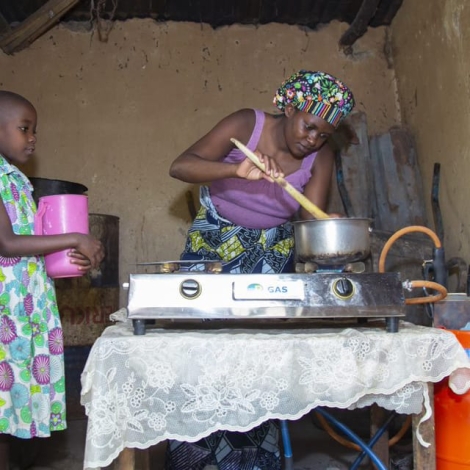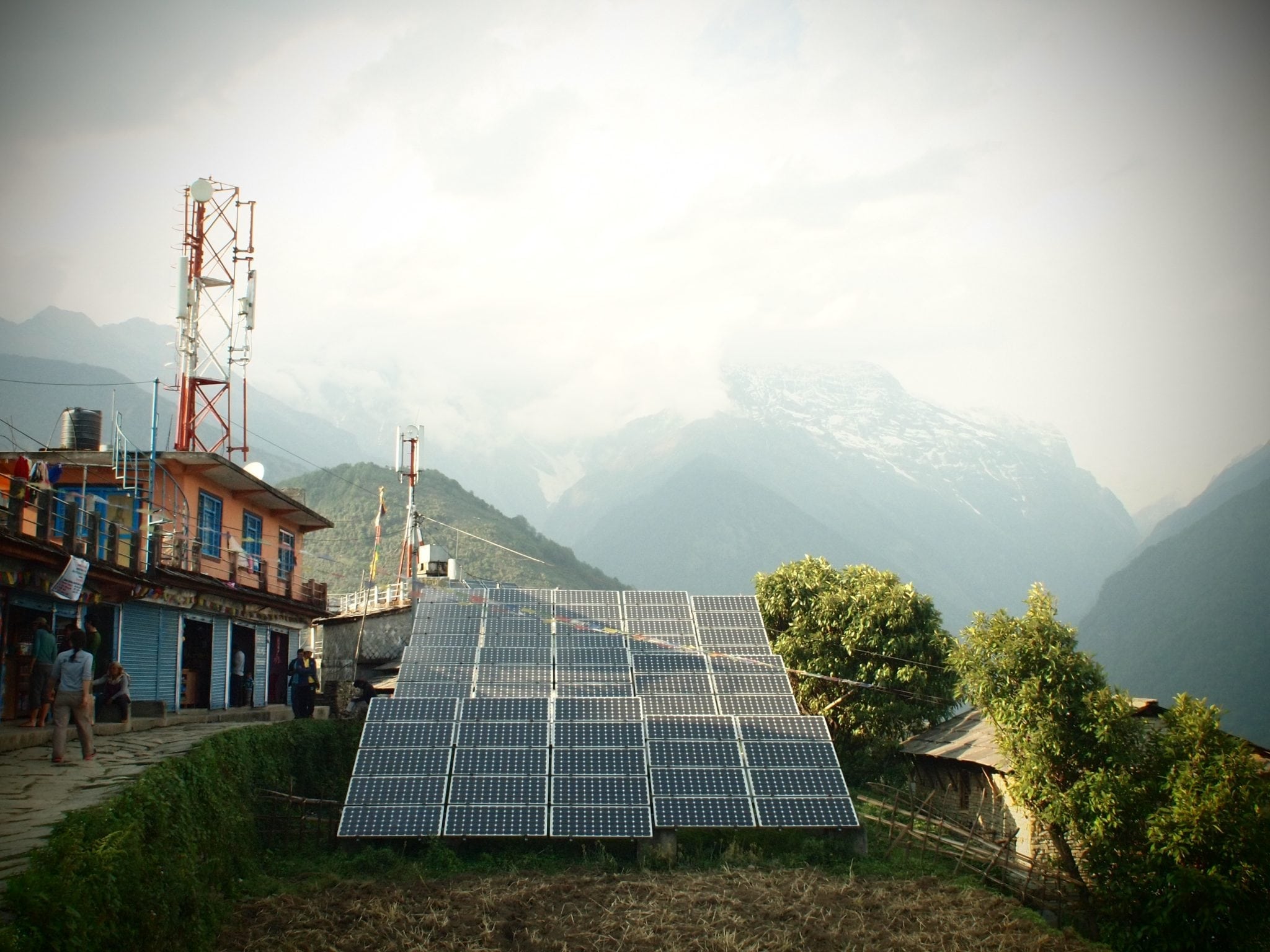There has been a gradual decline in the number of people worldwide who do not have access to clean cooking, with the needle moving from over 3 billion in 2010 to 2.6 billion in 2019. The overall picture is still pretty grim, however. Particularly so in Sub-Saharan Africa (SSA), where only 17 percent of the population have access to clean cooking fuels (IEA, 2019). Not only that, the number of those without access has actually gone up since 2015 as population growth outpaced the speed of provision efforts, meaning that 900 million people in SSA rely predominantly on firewood, charcoal, kerosene and other polluting cooking fuels.
The implications are overwhelmingly negative for all. Indoor air pollution remains among the biggest causes of premature deaths and respiratory diseases. Emissions from inefficient, open-air stoves contribute approximately 25 percent of global black carbon emissions. And the roughly 400kg (880 pounds) of wood per household per year required to cover cooking needs significantly contributes to the already dramatic level of deforestation (WLPGA, 2018).
Selling LPG as a metered fuel in a pay-as-you-go model rather than by the tank could make it affordable to underserved communities in Sub-Saharan Africa that are struggling to give up dirty cooking fules such as wood and charcoal. Obstacles to the plan are diluting its success, however.
Just like in the case of access to electricity, there is no one-fits-all solution to reach universal access to clean cooking. A number of context-appropriate and technologically sound solutions will be needed to achieve what is necessary, namely, an unprecedentedly large-scale move away from dirty fuels to reach the 2030 target of universal access to clean and sustainable energy, including for cooking.
Among recent solutions gaining prominence in East Africa is Pay as You Go (PAYG) Liquid Petroleum Gas (LPG). The concept is already implemented or in testing by at least a few companies in Kenya, Tanzania and Rwanda.
LPG has well-established distribution channels across the region, as it does in other parts of SSA. However, barriers to entry include high upfront costs of the cylinder (a one-off payment which depends on the cylinder’s size), the fuel (i.e. LPG, usually between 4kg to 15kg for domestic use) which again has to be paid up front, and the cookstove with accessories (a hose and a regulator) which can cost as much as (USD) $50 or more. Additionally, product quality, safety and distribution have been seen to hinder adoption.
The advantages of pay-as-you-go LPG
PAYG LPG models address those barriers by offering advantages over traditional commercial LPG:
- By establishing themselves as service providers rather than fuel distributors, PAYG LPG companies offer free delivery and safe installation, while retaining ownership of the cylinder which gets replaced or refilled once the customer runs out of fuel; this eliminates the high cost of a cylinder for the customer and addresses safety and canister delivery issues;
- By installing a meter which enables remote monitoring of fuel consumption and the ability to switch the flow of the fuel on and off, customers are able to pay only for the amount of gas they consume on a PAYG basis, just like in the case of mobile phones or off-grid solar systems; this means that instead of paying for the total amount of gas in the cylinder, a customer can top up their credit as much or as little as (s)he can (usually with a limit to what the minimum required amount should be) and whenever cash is available; this can often be done with mobile money which further increases convenience of use and allows the customers to get credit and start cooking again without leaving their homes;
- By offering stove and accessories financing customers can pay off these critical components in installments over a period of 6-12 months; as many households adopting this technology have never owned a gas stove previously, having relied on open-air charcoal or woodfire stoves, being able to purchase it on credit makes it more affordable given low average incomes (cost of a stove can vary between $15-$50 per unit, depending on whether it is a 1-, 2- or 3-burner one).
Additionally, services provided by PAYG LPG companies include delivery and refills which tend to be a considerable burden for traditional LPG customers who themselves have to deal with bringing their first tank and going to get refills every time they run out of gas.
The fuel-stacking problem
However, despite the advantages offered by PAYG models, there are behavioral and operational challenges which impact on the success of PAYG LPG enterprises.
Firstly, a common, and persistent, practice of fuel stacking poses a considerable challenge to providers’ profitability as relatively small amounts of gas are consumed on a monthly basis, hindering revenue flows. Business models are extremely sensitive to fuel consumption: every kilogram of gas consumed per customer matters, especially when trying to reach economies of scale. For example, assuming a customer base of 100,000 people, and a 2kg (4.4 pounds)/customer/month average consumption out of a 10kg (22 pounds) LPG tank means $200,000/month or $2,400,000/year revenue for the provider instead of $1,000,000/month or $12,000,000/year revenue if all customers were consuming 10kg/month (the maximum), given that the fuel is sold on credit (rather than paid for in total and up front as in the case of traditional LPG providers). In the 2kg/month consumption scenario, it takes five months for the provider to achieve revenue they would achieve in one month if the total (maximum) volume of LPG sold was consumed.
Fuel stacking also compromises the potential health benefits that could be reaped if households fully moved away from charcoal and firewood.
The problem of servicing hard-to-reach areas
Another business challenge is the servicing of new and existing consumers. In cities, where household density is high, this can be managed at a relatively small cost. However, it becomes difficult when trying to reach peri-urban and rural households which require longer travel distances to reach, and do so repeatedly (at the time of first delivery and then for every refill or servicing visit). This logistical barrier can create a significant dent in the operation and maintenance costs, effectively requiring providers to open up more service points, increasing the number of technicians and means of transport (usually motorcycles). Distribution challenges are equally problematic for traditional LPG resellers which has impacted on the overall adoption of LPG in SSA. The big difference, however, is that LPG distributors and resellers do not have to deliver cylinders to customers’ doors, instead it’s the customers who come to them.
From the end-user’s point of view, affordability and impeccable customer service are key (e.g. availability and readiness of technicians in case of product issues and for refills) as is clarity of service terms: how much do I have to pay per 1kg of gas? How do I make payments and how small or how large do they have to be? How do I contact customer support? All these aspects make up customer experience which, only if superior to other available options, will ultimately retain customers, make them consume higher amounts of LPG and boost their willingness to pay a premium for the PAYG service.
Behavior change campaigns could augment PAYG models
Encouraging full transition to LPG (i.e. boosting consumption) by changing consumer behavior, especially cooking habits (e.g. certain foods, like beans, being cooked exclusively on firewood or charcoal due to the length of time required to cook them), plays a critical role in making PAYG business models viable in the long run.
Efforts by both country governments and providers themselves should be made to raise awareness of advantages of clean cooking, best cooking practices which can eliminate the need to cook on wood or charcoal (e.g. soaking of beans prior to cooking and simmering), and the cost of cooking on fuels such as LPG which is comparable to that of cooking on dirty alternatives while still satisfying all cooking needs of an average household. A notable example that comes to mind is that of Kenya, where in 2015 the national government embarked on a six-year technical assistance project funded by the World Bank to transform the petroleum sector, which includes developing an LPG distribution model and a public awareness campaign (World Bank, 2018).
For further reading
International Energy Agency (IEA) (2019). SDG7: Data and Projections. Available online: https://www.iea.org/reports/sdg7-data-and-projections/access-to-clean-cooking
World Bank (2018). Kenya’s Strategy to Make Liquid Petroleum Gas the Nation’s Primary Cooking Fuel. Live Wire 2018/89. Available online: http://documents.worldbank.org/curated/en/955741536097520493/pdf/129734-BRI-PUBLIC-VC-LW89-OKR.pdf
World LPG Association (WLPGA) (2018). Substituting LPG for Wood: Carbon and Deforestation Impacts. Available online: https://www.wlpga.org/wp-content/uploads/2018/10/Substituing-LPG-for-Wood-Carbon-and-Deforestation-Impacts.pdf

